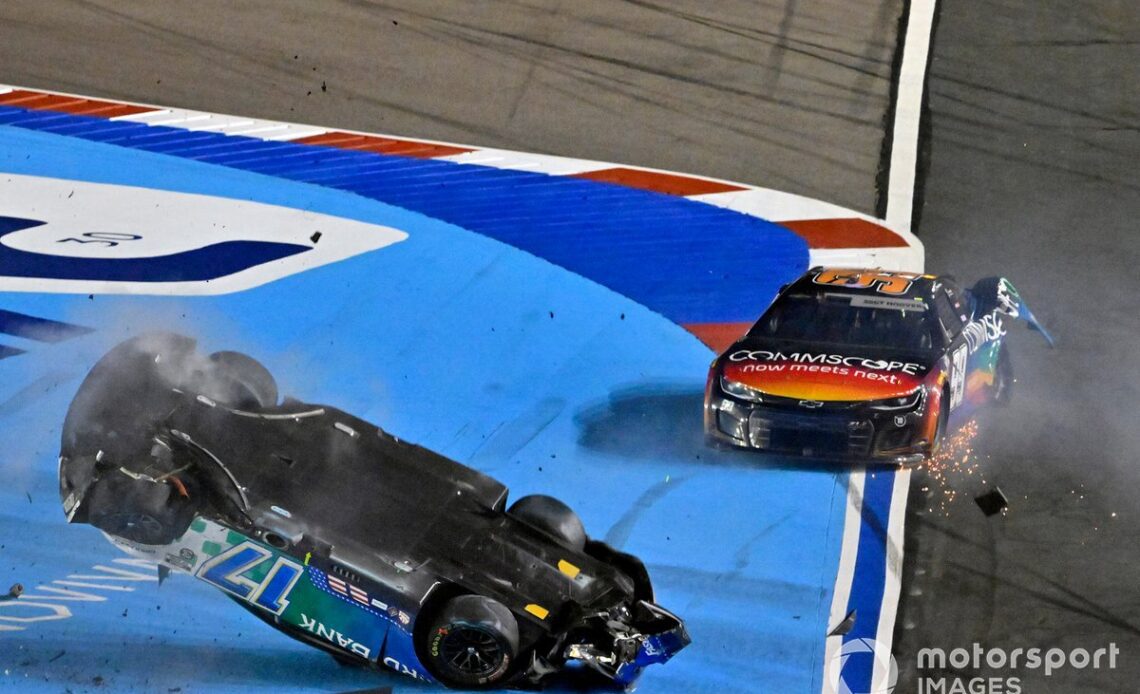One of the few negatives that came out of the debut of the Next Generation car in the 2022 season were complaints from drivers of more significant impacts from rear-end collisions with the car.
Two drivers – Kurt Busch and Alex Bowman – were sidelined with concussions during the season after their respective cars were involved in accidents which sent both backing into the wall. Busch has still not been medically cleared to compete, although he has retired from fulltime competition.
Dr. John Patalak, NASCAR’s vice president of safety engineering, said work on a new or altered rear-end clip and bumper structure to the car began in late May and early June, even before Busch’s accident in July at Pocono.
The process began with computer simulation work and ultimately involved real-world testing, the results of which were shared in a briefing with reporters Tuesday at NASCAR’s research and development center in Concord, N.C.
“We will always do physical tests,” Patalak said. “The computer simulation gives us a level of confidence to and build parts but ultimately it has to prove itself out with physical tests.
In the videos, the changes on the 2023 car showed a visible increase in “crushability” in rear end collisions.
The new design will get its first race conditions test in Sunday’s preseason Busch Lite Clash at the ¼-mile track inside the Los Angeles Memorial Coliseum.
Chris Buescher, RFK Racing, Fifth Third Bank Ford Mustang wrecks
Photo by: Nigel Kinrade / NKP / Motorsport Images
“There are always challenges because the car has to be able to perform on the race track without bending things while it’s not crashing,” Patalak said. “And so you have to look at wheel loads at Bristol and Dover, what happens to suspensions when you go over curbs at road courses, things like that.
“We have to work through and around and become creative in how we introduce deformations into the chassis for crashes to make sure we’re not bending things the way they’re not supposed to bend.
“One of our main concerns is that we are not introducing any new hazards, we can’t risk spilling fuel or rupturing oil and it needs to work on every race track. So, there are challenges based on what the cars have to do on road courses vs. superspeedways or short tracks.”
The process was not as easy as NASCAR had to balance safety concerns with not altering the aerodynamics of each manufacturer’s entry while…
Click Here to Read the Full Original Article at Motorsport.com – NASCAR – Stories…

